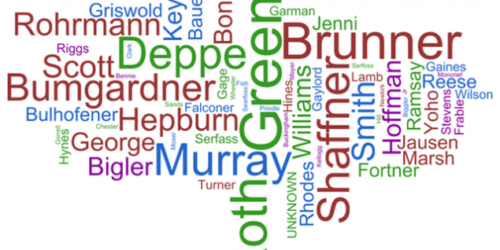This is an example of the “standard” or traditional pedigree chart used by genealogists in this format and many other similar formats for hundreds of years, primarily, in Western European countries. Here is an example of one from the late 1700s.
 |
| An ahnentafel family tree displaying an ancestor chart of Sigmund Christoph, Graf von Zeil und Trauchburg
Whether oriented horizontally or vertically, the charts have the same information. What they show, however, is significantly misleading and culturally prejudicial. Why does this particular type of chart exist? The primary reason involves the establishment of a system of validation for royalty and nobility based upon the concept of primogeniture or inheritance through the firstborn son.
I have been reading through a lesson book for teaching genealogy published back in 1943. Here is the citation to the book.
Deseret Sunday School Union Board (Salt Lake City, Utah). 1943. Adventures in research: genealogical training class Sunday School Lessons. Salt Lake City, Utah: Deseret Sunday School Union Board.
The emphasis and outline of this lesson manual are illustrative of many of the same basic attitudes commonly taught today. Here is quote from the book that reflects a common genealogical attitude even today. The quote is in the context of telling about how someone started their genealogical research effort by taking some classes.
Hence, the traditional pedigree chart. One result of this emphasis was apparent to me when I began my own ancestral research. Many of my predecessor researchers had focused only on their own surname line and had recorded only the “bloodline” in their pedigrees. This focus is still extremely evident today in many of the online family trees. Here is an example from the FamilySearch.org Family Tree. Granted, this illustration reflects the way records were kept back in the 17th and 16th Centuries but it does illustrate the influence of the standard pedigree chart. If you were to zoom in on this line, you would also see that the wives in this direct line are not identified even by given name. Here is an example. This is not an extreme or rare example, it is rather common. Now, what have we lost through this focus on the “bloodline” as was understood by generations of genealogists? The answer is more readily apparent when we impose our Western European cultural emphasis on non-European cultures. This emphasis blinds us to family relationships that do not “fit” within our standard pedigree format as expressed by the anthropological term “kinship.” Here is a reference to a good introduction to the concept of kinship. “The Nature of Kinship: Menu of Topics.” Accessed August 22, 2020. https://www2.palomar.edu/anthro/kinship/Default.htm. Here is an introductory quote from this website:
Essentially, by a narrow focus on the traditional pedigree chart and its implications, we lose all of the family kinship relationships. Here is another quote from the website showing what is lost.
This is a representation of matrilineal descent. Focusing on the “standard” bloodline Western European model developed to validate royalty and nobility obscures, ignores, and denigrates this cultural reality. In fact, this emphasis forces genealogists to become blinded in their research efforts outside of the narrow cultural model inherited from Western Europe. Interestingly, this emphasis is so pervasive in the historically predominant culture of the United States that the currently violent political atmosphere reflects this bias. The increasing popularity of genealogical DNA testing, largely ignored by those who support any concept of racial supremacy, undermines the cultural basis for the standard pedigree model. It is also interesting that the immensely popular Harry Potter series of books is based on a theme of the conflict engendered by claims of racial purity. It is time that genealogists stop promoting a narrow view of lineage and kinship and begin to discuss ideas of ways that kinship relationships can be preserved and documented. I think that the web format for the internet with clouds of relationships based on cultural kinship is the best representation of reality. What do you think? |









